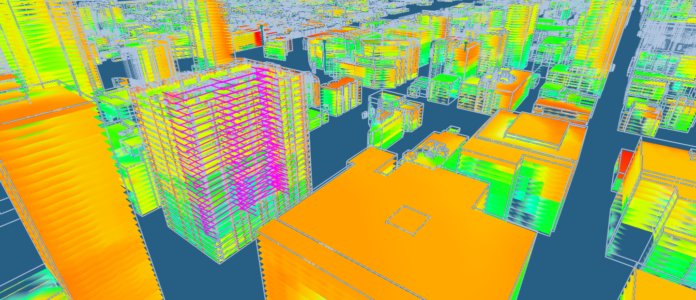The benefits of 5G will be felt first by IoT, smart cities, public safety and other real-time applications requiring fast wireless communications. While deployments are starting to appear, it is foreseen that 5G will co-exist with other radio access technologies (RATs) such as LTE-A/Pro, NB-IoT and WiFi for some time yet.
In order to account for a greater diversity of services supported by 5G and be spectrum and energy efficient, 5G New Radio (NR) must offer a much higher degree of flexibility and scalability than previous mobile networks, resulting in a more complicated radio system.In addition to supporting traditional services provided by the existing mobile networks, three new service categories are envisioned for 5G – enhanced mobile broadband (eMBB), ultra-reliable and low- latency communications (URLLC) and massive machine type communications (mMTC). These three new categories of services have diverse requirements in terms of bandwidth, latency, mobility, connection density and data rates. For example, eMBB places high requirements on spectrum efficiency, peak data rate, area traffic capacity and network energy efficiency.
To fulfill what 5G promises, 5G NR needs to be empowered by key enabling technologies, including Millimetre wave (mmWave) communications, Massive MIMO and 3D beamforming, ultra-dense small cell and heterogeneous network (HetNet) deployments, and scalable OFDM numerologies – 2N sub-carrier spacing, scalable CP, TTI, etc.
The complexity of 5G NR, the need of cost-effective deployment and the inter-working with existing networks based on multi-RATs will bring the complexity of 5G NR network planning to an unprecedented level compared to previous generations of mobile networks.
Requirements for 5G NR network planning
To reduce the cost and implementation time of 5G NR networks, the urban environments where 5G NR will be deployed need to be modelled accurately. This is mainly because mmWave signals will be affected by small objects such as trees, vegetation, street furniture, vehicles and the crowd. In addition, 5G NR will be more integrated with its operating environments. For example, small cells will be mounted under roof tops and on street furniture, antennas integrated with building structures, and IoT nodes embedded in walls, roads, etc.
GIS (Geographical Information Systems) have been widely used for outdoor network planning since the 1990s, providing multiple layers of information such as terrain, clutter and vector data. The resolution of GIS required has evolved from 20m to 5m for 2G to 4G, but for 5G NR a resolution of 1m or better is needed to reveal objects such as trees, vegetation or lampposts.
With most mobile traffic taking place indoors or in-built environments such as Central Business Districts (CBDs), train stations, airports or shopping malls, care needs to be taken to ensure indoor and outdoor mobile coverage is seamless. In 2G/3G/4G mobile networks, most of the indoor mobile traffic is served by outdoor macrocells. However, this will become infeasible in the 5G era, as 5G’s higher frequencies are ineffective at penetrating into buildings. With an estimation that over 80% of indoor traffic will be served by mobile networks installed in buildings, there has to be a better solution. But in order to cost-effectively deploy small cells and DAS indoors, more accurate 3D building models are needed.
As indoor networks increase, interactions between indoor and outdoor become important. To achieve seamless service and minimize interference between indoor and outdoor networks, indoor and outdoor networks need to be planned and optimized in coordination. This calls for a new generation of network planning tools.
Ranplan Professional is the only radio network planning tool that delivers combined indoor and outdoor modelling capabilities and keeps pace with growing coverage and capacity complexities presented by 5G. Ranplan Professional is an all-in-one, heterogeneous network planning, optimization and simulation solution for small cells, DAS and WiFi across indoor and outdoor environments and also integrates with macro cell networks. It is used to accurately predict the received signal strength and throughput, enabling RF engineers to plan 5G NR networks with complete confidence, resulting in reduced time scales and cost in design, testing and post-deployment optimization.

